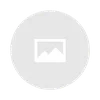Grocery Guides
Halibut – All You Need to Know | Instacart’s Guide to Groceries

What is halibut?
Halibut is a fish that is naturally found in some of the coldest waters in the Atlantic and Pacific Oceans. It’s a firm yet flaky fish that is nutritious and easy to cook with. It’s caught throughout the year and processed immediately, so you can shop for frozen halibut filets at any time.
Where did halibut originate from?
Halibut are native to the North Pacific Ocean but have since spread around the Northern Hemisphere. They live in cold water and can now be found as far north as the Bering Sea and south as Northern California. They are from the Hippoglossus family and are divided into three main types:
- Atlantic halibut
- California halibut
- Greenland halibut
Halibut can range from 11 to 55 pounds in weight, and each fish can be cut into multiple filet or steak pieces. The meat in their cheeks is also edible and looks like scallops. Although they have few bones, they can be used to make homemade bone broth for soups and sauces.
What is the nutritional value of halibut?
Halibut is nutrient-dense and a great addition to a healthy diet. It’s low in calories and fat yet high in protein. A three-and-a-half ounce serving, without spices or sauces, contains:
- 91 calories
- 1.3g fat
- 18.6g protein
- 0g carbohydrates
Fish, including, halibut are a good source of many of the vitamins and minerals necessary for optimal health. Some of the nutrients found in halibut include:
- Selenium
- Niacin
- Phosphorous
- Magnesium
- Vitamin B12
- Vitamin B6
- Omega-3 fatty acids
- Zinc
- Calcium
- Iodine
- Potassium
- Folate
How is halibut raised?
In their natural habitats, halibut live near the bottom of the ocean, coming up to shallower waters on rare occasions. They are caught by trawl nets and bottom long lines. Halibut can also be caught with rod and reel, with Alaska being a common destination for people who enjoy sport fishing for halibut. There are fish farms in some countries, including Canada, Scotland, Iceland, and Norway, which raise halibut for human consumption.
When is halibut in season?
Wild halibut are mainly caught from March to November, but fish farms operate year-round and keep stores stocked with frozen halibut filets and halibut steaks.
How do you pick halibut at the grocery store?
When buying fresh halibut, you want to choose fish that are firm and have tight skin. For frozen filets and steaks, choose white pieces with no discoloration in the meat. The fat may have a slight yellow tint which is normal.
As you look for halibut in packages, try to look through clear parts of the packaging to see if there is any icy build-up on the fish. If you notice excessive amounts of ice on the fish, avoid it because this indicates that the fish has thawed and been frozen again. Not only is the taste affected by repeated thawing and freezing, but it’s also unsafe.
When you shop for halibut steaks or filets with Instacart, you can give shopping tips, like the one above, to your shopper. As you place your order, you can leave shopping notes that they can follow to ensure your order is picked correctly.
How to store halibut
Uncooked halibut should be thawed in the refrigerator, which can be done for up to two days before using the fish. To prevent your fridge from smelling “fishy,” store it in a tightly sealed container and keep it in the coldest place in your refrigerator.
For fish that is already cooked, you can keep leftovers safely for up to two more days. If you purchased a fresh halibut or you caught it yourself, you can keep it in the refrigerator for three to four days. By the third day, you should gut and clean the fish so that you can freeze it if you aren’t able to use it.
For packaged fish, follow the “use by” date, which is marked on the packaging. This ensures that the quality of the fish is ideal. When the fish is kept at 0-degrees or below, it will remain safe for eating even longer.
How to tell if halibut is bad
The best way to tell whether or not fish is bad is to look at it and smell it. Halibut that is soft, mushy, slimy, or moldy has gone bad and should be thrown away. Halibut has a natural fishy smell, but it should not be overpowering or smell rotten. If you have any reservations about the smell or appearance of the fish, you need to discard it. A few dollars wasted due to throwing away the fish is not worth the risk of hundreds of dollars in medical bills for getting sick from eating bad fish.
What can I substitute for halibut?
Halibut is a popular fish, and sometimes stores run low on stock. Luckily, several other types of fish are good substitutes for halibut, and you can use them in almost any recipe just as you would halibut. You can buy flounder, fluke, or turbot to fill in for halibut, plus cod and wild striped bass works well in the place of halibut steaks.
Shop for groceries online
Did you know that you can order your groceries—yes, even frozen halibut—from the comfort of your couch and have it delivered right to your front door? When you order early in the day, there may be the option for same-day delivery, or you can schedule the drop-off for the time that’s best for your schedule. Need your groceries sooner? A shopper can help you with that too! You can opt for in-store pick-up, and your order will be ready and waiting at the time you select. Use Instacart to browse fresh produce, meat, and household essentials now!
Grab it now on Instacart:










Most Recent in Grocery Guides

Grocery Guides
15 Tasty Ice Cream Alternatives: Yogurt, Shaved Ice & More
Ice cream has been a beloved treat for generations. With its rich flavors and smooth texture, it’s no wonder people choose ice cream when looking for dessert. However, as dietary restrictions and health consciousness evolve,…...
Apr 10, 2024![When Is Artichoke Season? [Recipes + Guide]](https://www.instacart.com/company/wp-content/uploads/2024/03/when-is-artichoke-season-hero-447x224.webp)
Grocery Guides
When Is Artichoke Season? [Recipes + Guide]
Quick Answer When is artichoke season? In North America, artichoke season is from March to May, with smaller batches in October. Artichokes are a unique and versatile vegetable known for its tender heart and delicate…...
Mar 6, 2024
Grocery Guides
Brown Eggs vs. White Eggs: How Are They Different?
Eggs are an essential ingredient in many sweet and savory recipes. The possibilities are endless when it comes to using these protein-packed powerhouses — you can scramble, fry, boil or poach eggs, or you can…...
Feb 24, 2024

 Squash – All You Need to Know | Instacart Guide to Fresh Produce
Squash – All You Need to Know | Instacart Guide to Fresh Produce  Ghost Pepper – All You Need to Know | Instacart Guide to Fresh Produce
Ghost Pepper – All You Need to Know | Instacart Guide to Fresh Produce  Sprouts – All You Need to Know | Instacart Guide to Fresh Produce
Sprouts – All You Need to Know | Instacart Guide to Fresh Produce 

